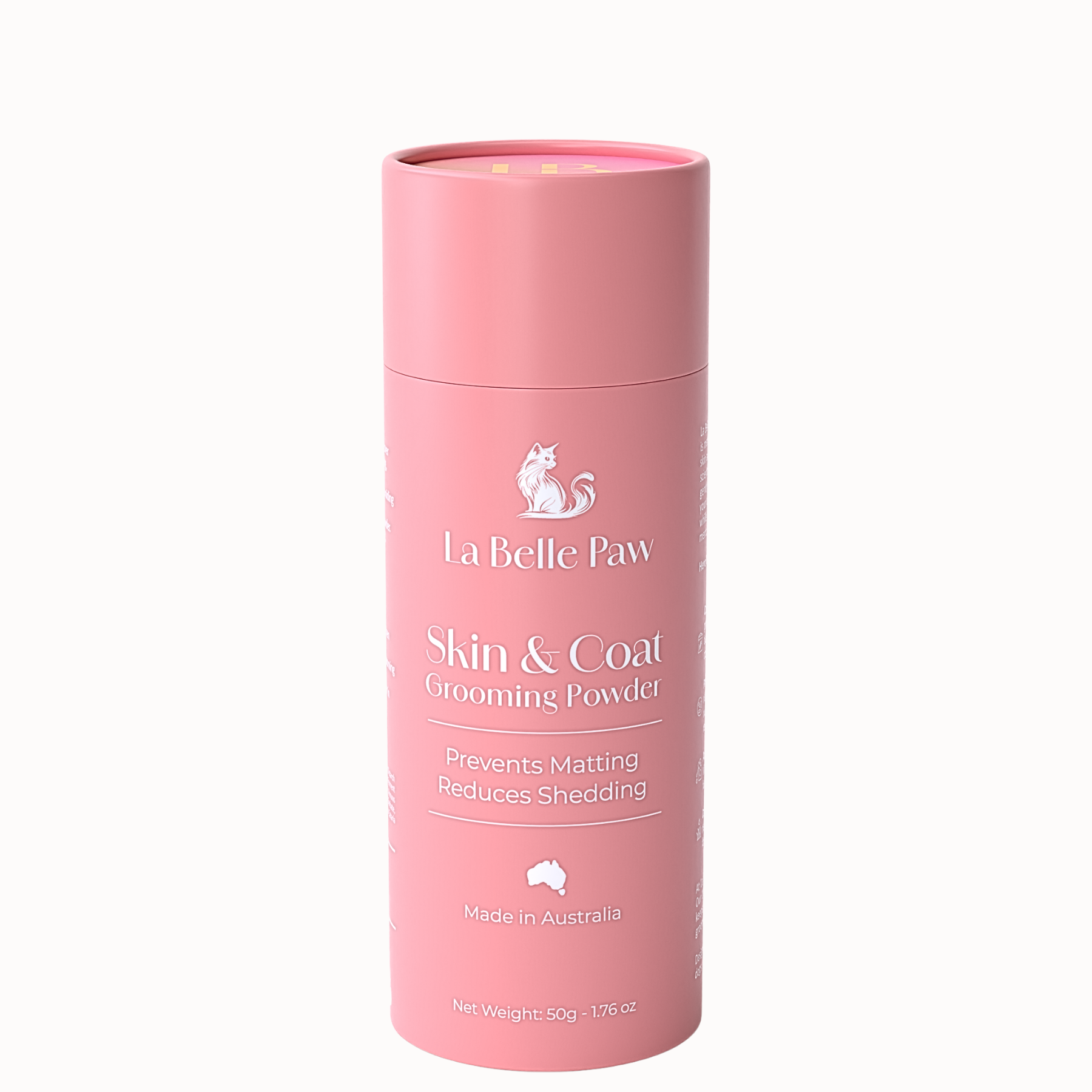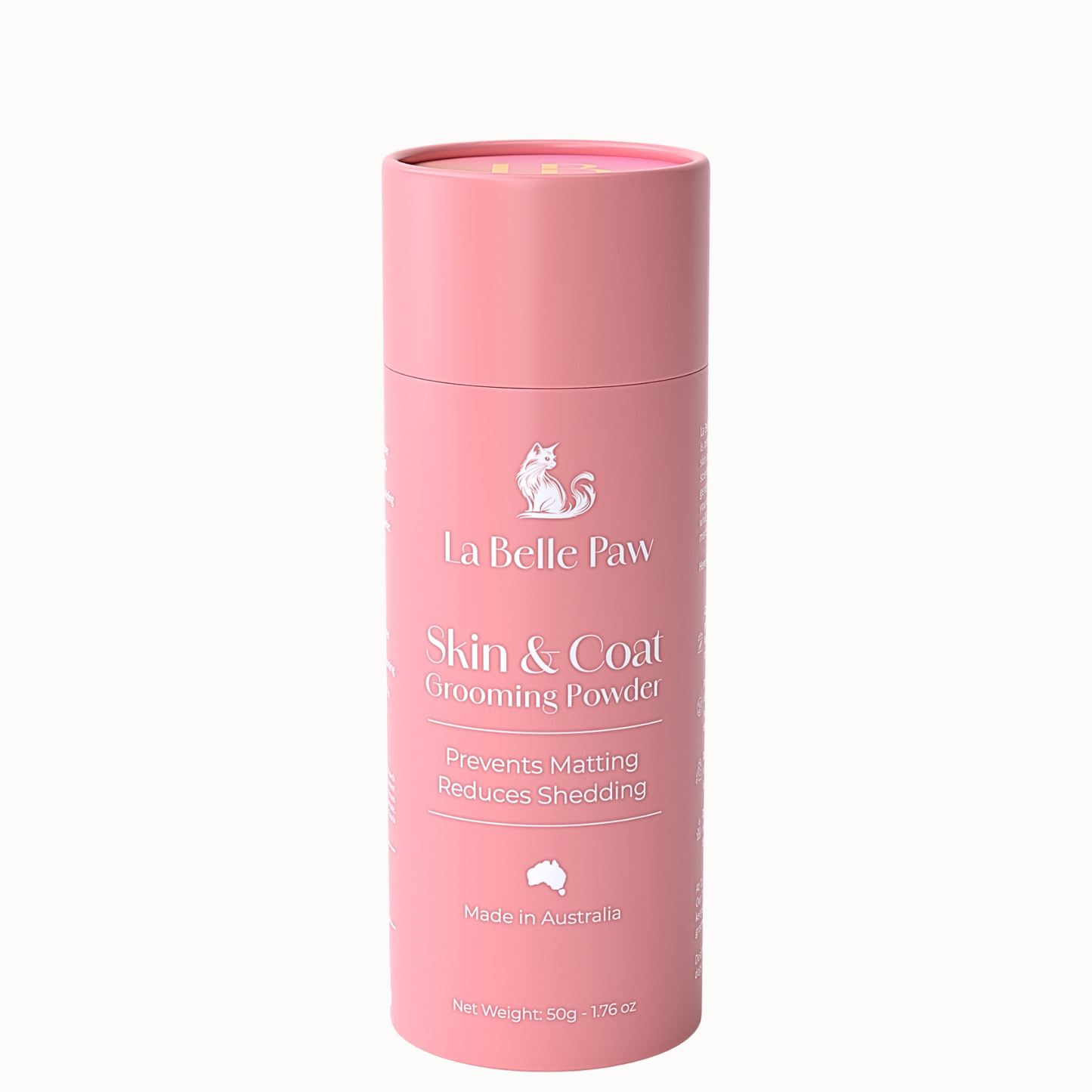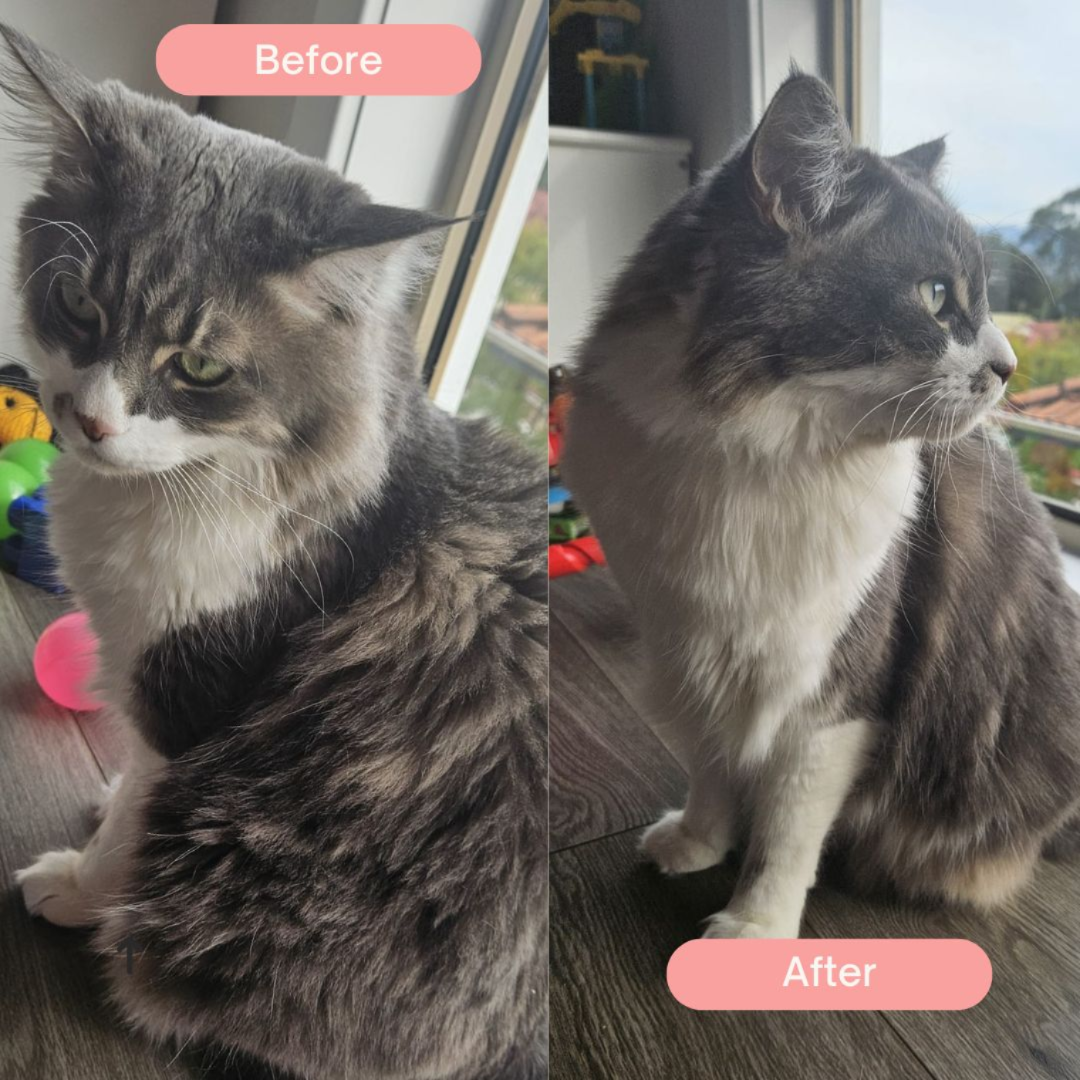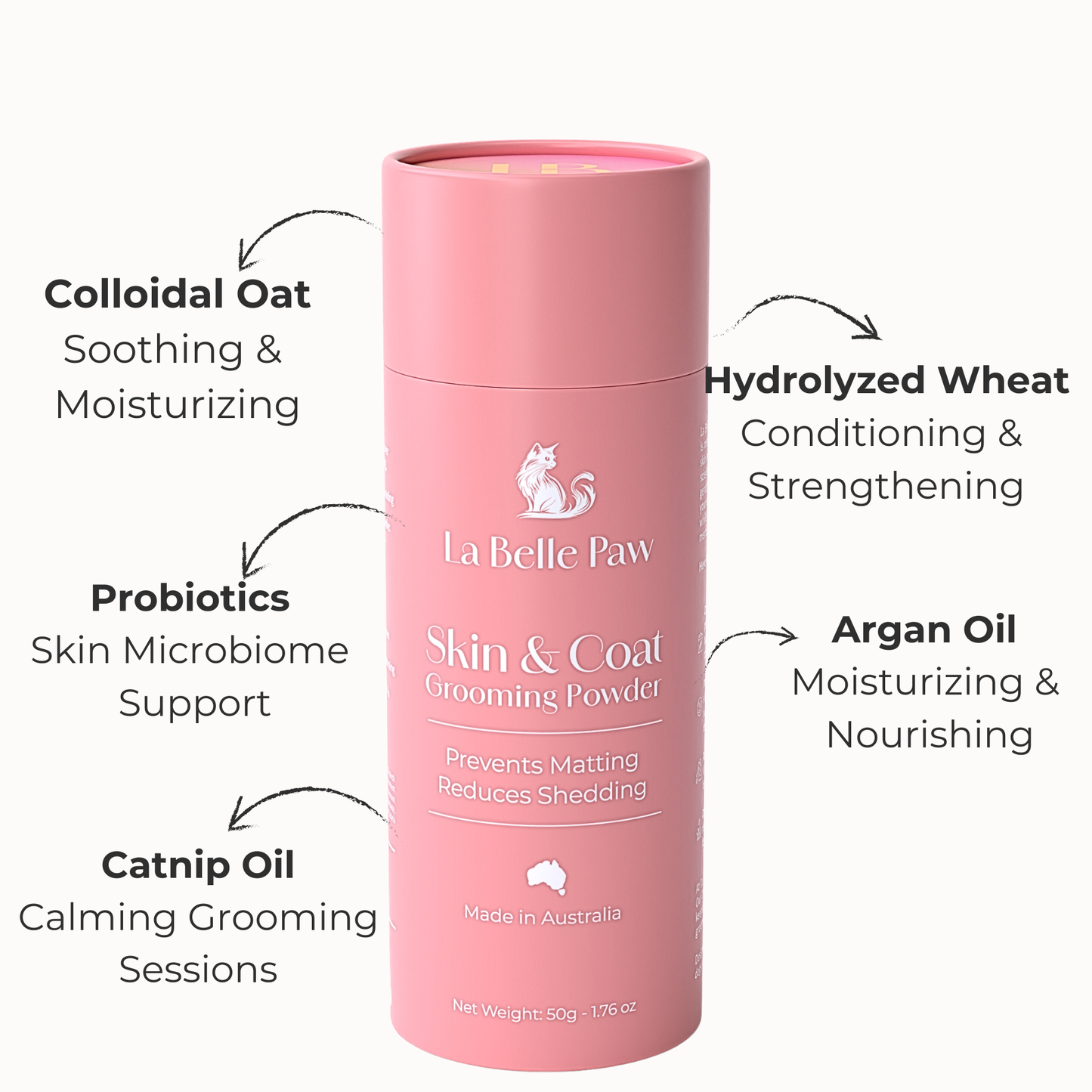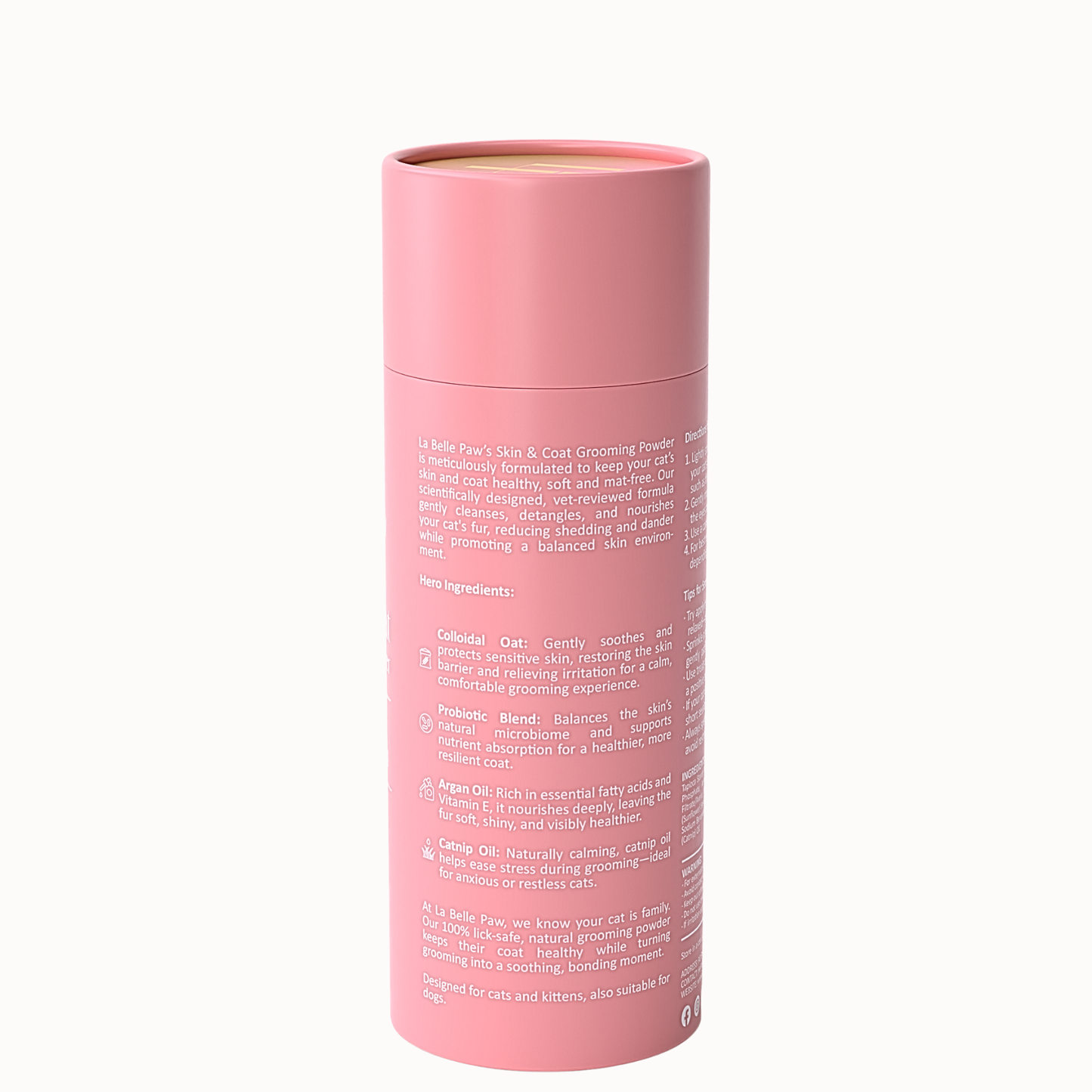
Understanding the Microbiome: Why It’s Crucial for Your Cat’s Skin Health
Share
What is the Microbiome?
The microbiome refers to the vast community of microorganisms that inhabit various parts of the body, including the skin, gut, and mouth. These microorganisms include bacteria, fungi, viruses, and other microscopic life forms that coexist with their host. In the context of skin health, the microbiome consists predominantly of bacteria and fungi that live on the surface of the skin and within its deeper layers.
The Role of the Microbiome in Skin Health
The skin microbiome is an essential component of the skin's overall health and function. It serves several critical roles:
-
Barrier Protection: The microbiome acts as a first line of defense against harmful pathogens. By occupying space and resources, beneficial microorganisms prevent harmful bacteria and fungi from colonizing the skin and causing infections.
-
Immune System Regulation: The skin microbiome helps modulate the immune system. It educates immune cells to distinguish between harmful pathogens and harmless microorganisms, thereby preventing unnecessary immune responses that could lead to inflammation and allergies.
-
Skin Integrity: Beneficial microorganisms produce substances that strengthen the skin barrier, maintain its integrity, and promote the healing of minor wounds and abrasions.
-
Nutrient Production: Some microorganisms in the skin microbiome produce essential nutrients, such as fatty acids and vitamins, that are vital for maintaining healthy skin.
Why is the Microbiome Important for Cats?
Cats, like humans, have a unique and complex skin microbiome that plays a crucial role in their overall health. Here’s why maintaining a healthy skin microbiome is particularly important for cats:
-
Preventing Infections: Cats are prone to various skin infections, including bacterial and fungal infections. A healthy microbiome can help prevent these infections by keeping pathogenic microorganisms in check.
-
Reducing Allergies and Inflammation: Cats can suffer from allergic skin reactions and inflammatory conditions such as dermatitis. A balanced microbiome helps regulate the immune response, reducing the likelihood of excessive inflammation and allergic reactions.
-
Supporting Wound Healing: Cats often get minor cuts and scratches during their adventures. A healthy microbiome promotes faster and more effective wound healing, reducing the risk of secondary infections.
-
Maintaining Coat Condition: The skin microbiome influences the health of a cat’s coat. A balanced microbiome ensures that the skin produces the right amount of oils, keeping the fur shiny and preventing issues like dryness or excessive shedding.
Factors Affecting the Cat’s Skin Microbiome
Several factors can influence the balance of the skin microbiome in cats:
-
Diet: A balanced and nutritious diet supports a healthy microbiome. Foods rich in omega-3 fatty acids, vitamins, and minerals are particularly beneficial for skin health.
-
Environment: The environment a cat lives in can impact its skin microbiome. Exposure to harsh chemicals, pollutants, or allergens can disrupt the balance of microorganisms on the skin.
-
Grooming Products: The choice of grooming products is crucial. Harsh shampoos and treatments can strip the skin of its natural oils and beneficial microorganisms, leading to imbalances. Using gentle, non-toxic, and microbiome-friendly grooming products is essential.
-
Medical Conditions: Underlying medical conditions, such as allergies or hormonal imbalances, can affect the skin microbiome. Addressing these conditions with the help of a veterinarian is important for maintaining a healthy microbiome.
How to Support Your Cat’s Skin Microbiome
Here are some practical steps to support and maintain a healthy skin microbiome for your cat:
-
Use Microbiome-Friendly Grooming Products: Choose grooming products specifically designed to support the skin microbiome. These products should be free from harsh chemicals and include ingredients that nourish the skin.
-
Provide a Balanced Diet: Ensure your cat’s diet is rich in essential nutrients that support skin health. Consult your veterinarian for dietary recommendations tailored to your cat’s specific needs.
-
Maintain a Clean Environment: Regularly clean your cat’s living environment to minimize exposure to harmful substances and allergens. Use pet-safe cleaning products to avoid introducing toxins.
-
Regular Vet Check-Ups: Regular veterinary check-ups can help detect and address any underlying health issues that might affect your cat’s skin microbiome. Early intervention is key to maintaining overall health.
-
Monitor Grooming Habits: Observe your cat’s grooming habits and look for any changes that might indicate skin issues. Excessive grooming or lack of grooming can be signs of underlying problems.
Conclusion
The skin microbiome is a vital aspect of your cat’s overall health and well-being. By understanding its importance and taking steps to support a balanced microbiome, you can help ensure that your cat enjoys healthy skin, a shiny coat, and a happier life. Remember, a healthy microbiome is not just about treating problems as they arise but about taking proactive measures to maintain a balanced and thriving microbial community on your cat’s skin.

